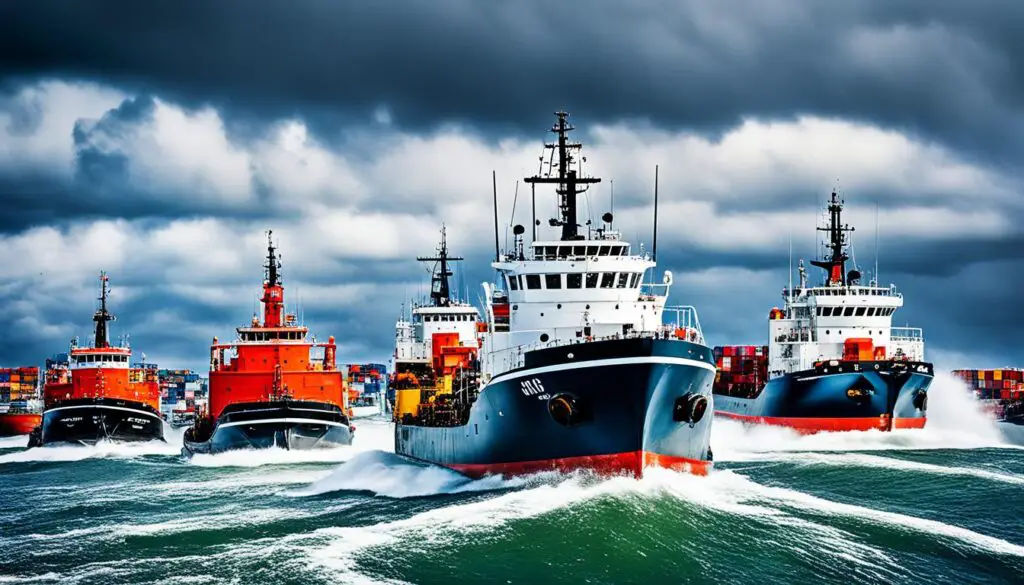Underwater welding is a specialized field within marine engineering that encompasses the design, development, production, and maintenance of equipment used at sea and onboard sea-going vessels. As a professional in this field, I understand the crucial role that underwater welding techniques play in maritime maintenance operations.
Marine engineers, equipped with expertise in underwater welding techniques, are responsible for operating, maintaining, and repairing all major mechanical and engineered equipment on a ship. This includes monitoring and maintaining mechanical systems, planning maintenance, fuel oil bunkering, and emergency breakdown and repair. The utilization of these techniques enables us to efficiently repair and maintain underwater structures, ensuring the integrity and safety of vessels.
The lifestyle of a marine engineer can be physically and emotionally demanding, with long hours of work and limited shore leave. However, for professionals in this field, the opportunities for career growth and development within the maritime industry are abundant. By continually updating our knowledge and honing our skills in underwater welding, we can contribute to the safe and efficient operation of ships and the maintenance of maritime infrastructure.
Key Takeaways:
- Underwater welding is a specialized field within marine engineering.
- Marine engineers are responsible for operating, maintaining, and repairing major mechanical and engineered equipment on ships.
- Underwater welding techniques enable efficient repair and maintenance of underwater structures.
- The lifestyle of a marine engineer is physically and emotionally demanding but offers ample career growth opportunities.
- Continual knowledge update and skill development are essential for professionals in the field.
The Importance of Tug Boats for Maritime Operations
Tug boats play a crucial role in maritime operations, particularly in mooring and berthing operations of ships. They provide assistance by towing or pushing vessels towards the port. Tug boats are designed with solid structural engineering to ensure their strength and power, allowing them to handle the forces involved in maneuvering large ships.
There are different types of tug boats that serve specific purposes in maritime activities:
- Conventional Tugs: The oldest type of tug boats, they have simple construction and low maintenance costs.
- Tractor Tugs: Highly maneuverable and versatile, tractor tugs offer full thrust over 360 degrees.
- Azimuth Stern Drive Tugs: These tugs provide excellent performance and fast speed.
Tug boats are essential for various maritime activities, such as:
- Escorting and maneuvering ferries, barges, and non-self-propelled vessels like oil platforms and log rafts.
- Salvage operations.
- Icebreaking.
- Fire-fighting in ports.
The usage of tug boats depends on factors such as port traffic volume, types of ships to be served, navigational obstacles, and local laws. The appropriate selection of tug boats enhances the efficiency and safety of mooring operations, ensuring the smooth movement of ships within the harbor.
| Tug Boat Type | Description |
|---|---|
| Conventional Tugs | The oldest type. Simple construction, low maintenance costs. |
| Tractor Tugs | Highly maneuverable and versatile. Full thrust over 360 degrees. |
| Azimuth Stern Drive Tugs | Excellent performance and fast speed. |

Conclusion
Underwater welding techniques and tug boats are essential components of maritime maintenance operations. The use of underwater welding enables efficient repair and maintenance of underwater structures, ensuring the safety and integrity of vessels. Skilled marine engineers specializing in underwater welding techniques play a vital role in this field, employing their expertise to tackle the unique challenges of working in submerged environments.
On the other hand, tug boats provide invaluable assistance during mooring and berthing operations, facilitating the safe and efficient movement of ships within ports. With various types of tug boats available, including conventional tugs, tractor tugs, and azimuth stern drive tugs, maritime professionals can select the most suitable vessel for each specific task at hand. From maneuvering ferries to assisting oil platforms, tug boats serve a range of purposes, making them a cornerstone of maritime operations.
The combined utilization of underwater welding techniques and tug boats underscores the significance of innovation and specialized knowledge in the maritime industry. As professionals in the field continue to advance their expertise in these areas, they enhance the efficiency and effectiveness of maritime maintenance operations. By leveraging their skills in underwater welding and leveraging the capabilities of tug boats, they contribute to the creation of safer and more reliable vessels, upholding the highest standards of maritime maintenance.
FAQ
What is underwater welding?
Underwater welding is a specialized technique used in maritime maintenance operations to repair and maintain underwater structures on vessels. It involves welding while submerged in water, using specific procedures and equipment.
What are the advantages of underwater welding techniques?
Underwater welding techniques offer several advantages, such as allowing for efficient repair and maintenance of underwater structures without the need for dry docking or removing the vessel from the water. This saves time and cost and ensures the integrity and safety of the vessel.
What are the different types of tug boats?
There are different types of tug boats used in maritime operations. Conventional tugs have simple construction and low maintenance costs. Tractor tugs are highly maneuverable and versatile, with full thrust over 360 degrees. Azimuth stern drive tugs offer excellent performance and fast speed.
What are tug boats used for?
Tug boats play a crucial role in maritime operations, particularly in mooring and berthing operations of ships. They provide assistance by towing or pushing vessels towards the port. Tug boats are also used for escorting and maneuvering ferries, barges, and non-self-propelled vessels, as well as salvage operations, icebreaking, and fire-fighting in ports.
How do underwater welding techniques and tug boats contribute to maritime maintenance operations?
Underwater welding techniques enable efficient repair and maintenance of underwater structures, while tug boats provide crucial assistance in mooring and berthing operations, ensuring the safe and efficient movement of ships within ports. The combination of these technologies improves the efficiency and effectiveness of maritime maintenance operations, resulting in safer and more reliable vessels.
